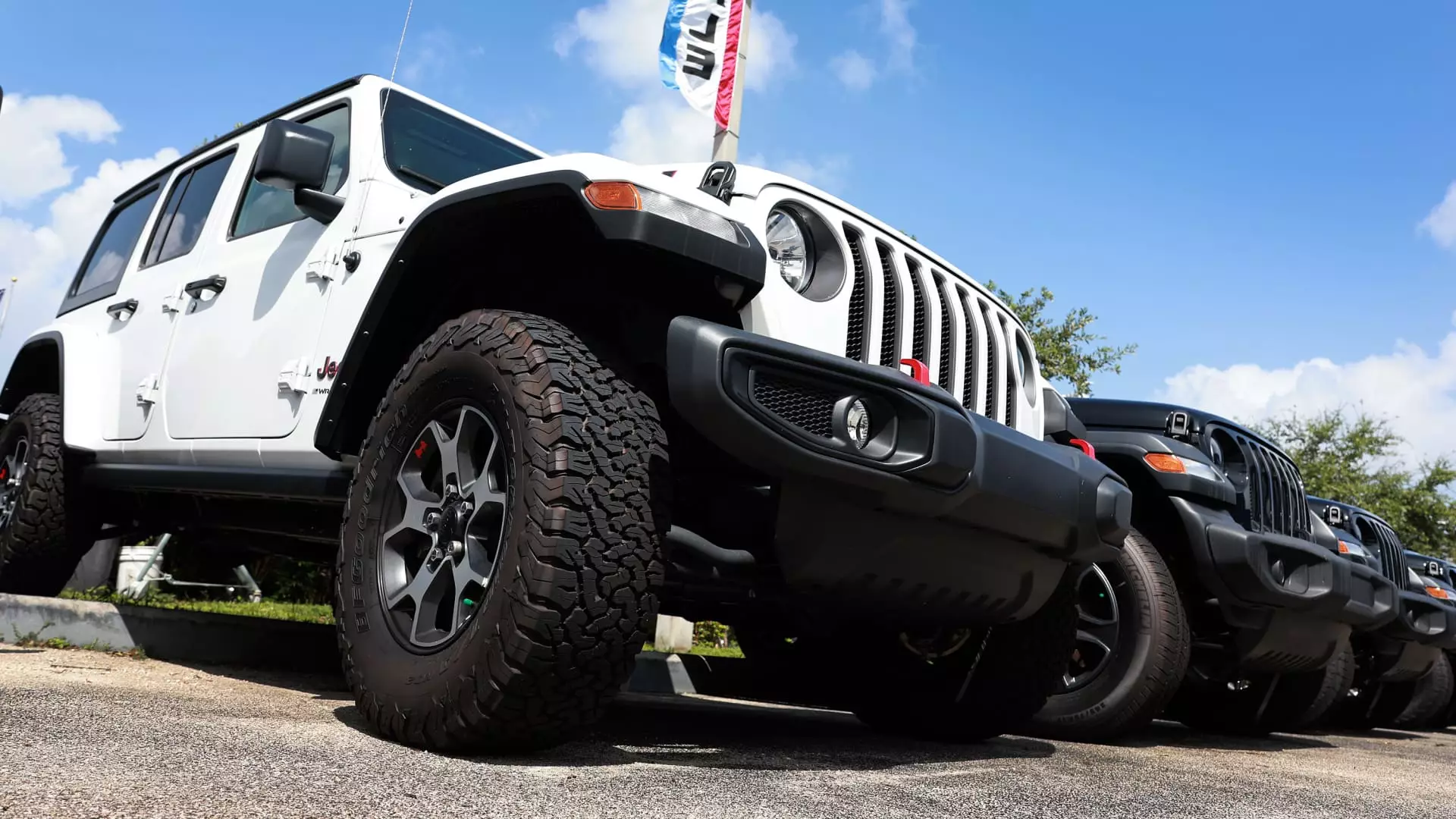The automotive industry in the United States has experienced significant turbulence as the third quarter of 2023 draws to a close. A combination of economic instability, shifting political landscapes, and persistent high interest rates has cast a shadow over new vehicle sales, presenting both challenges and opportunities within the market. As economic analysts from Cox Automotive and Edmunds.com share their projections, it becomes evident that upcoming quarters may continue on this downward trajectory as buyers grapple with affordability issues.
Sales forecasts indicate a troubling dip of roughly 2% for new vehicle sales in the third quarter, translating to an anticipated volume of around 3.9 million vehicles. This decline is reflective of a broader trend that marks a notable 5% decrease from the previous quarter. Analysts, such as Charlie Chesbrough, senior economist at Cox Automotive, caution that 2024 has been fraught with volatility, and there are no clear signs of a quick recovery. Despite the Federal Reserve’s recent adjustment to interest rates, which may have provided some respite, it is not enough to instigate a dramatic resurgence in auto sales as concerns over economic conditions linger.
One of the primary constraints on the automotive market is the question of affordability. Consumers now face the reality of financing an average new car at a staggering $40,000, which raises critical questions about the accessibility of new vehicles for the average American. Jessica Caldwell of Edmunds highlights the narrowing landscape of potential buyers, illuminating how the high costs associated with new automobiles continue to exclude many consumers. This raises potential long-term ramifications for manufacturing and retail strategies across the market.
Market projections estimate that total light-duty vehicle sales will reach approximately 15.7 million units in 2024. However, this figure carries a notable revision from earlier forecasts, indicating a tightened outlook for automakers. The shifts in financial strategies adopted by manufacturers may influence pricing structures and inventory management going forward.
Within the competitive landscape, certain automakers are expected to fare better than others in this quarter’s sales performance. Notably, Honda and Ford are projected to see growth, while Stellantis, Toyota, and BMW may experience significant sales declines. Stellantis, in particular, has faced notable challenges, as sales may plummet by 21% compared to last year, marking a concerning trend for the automaker. The strategy employed by CEO Carlos Tavares—prioritizing profits over market share—has led to a stark reevaluation of performance metrics, especially regarding popular brands like Jeep and Ram.
As electric vehicles (EVs) continue to carve out their place in the market, sales are on an upward trajectory, expected to climb around 8% year-over-year. However, it’s essential to note that this growth is happening against the backdrop of declining sales for Tesla, the current leader in the EV space. Projections indicate that Tesla’s market share could dip below 50%, a noteworthy milestone considering its dominant position in the market for several years.
The rising demand for electric vehicles can be largely attributed to substantial incentives available to consumers. As average transaction prices for EVs hold steady year-over-year, enticing subsidies from federal programs have helped to offset costs. With federal credits as high as $7,500 available for qualifying vehicles, the pull of EVs is becoming increasingly appealing for buyers in search of financial relief. This is further compounded by a noteworthy disparity in incentives between traditional combustion vehicles and their electric counterparts, with EV incentives overwhelming those for conventional cars by more than 80%.
Nevertheless, the landscape is not entirely rosy; the slow pace of EV adoption suggests that consumer behavior may still lag behind manufacturer production capabilities. The current climate necessitates a close examination of consumer needs and market responses, hinting at a possible recalibration in sales strategies as automakers jostle for relevance in a rapidly changing industry.
As the market braces for uncertainties heading into the final months of the year and beyond, industry stakeholders must navigate a complex interplay between economic pressures and consumer demands. With affordability continuing to remain the key barrier to new vehicle purchases, entities across the automotive spectrum are faced with marrying pricing strategies with innovations that cater to a diverse customer base. The evolving dynamics will undoubtedly shape the future of new vehicle sales as the industry adapts to meet the ongoing challenges it faces.

